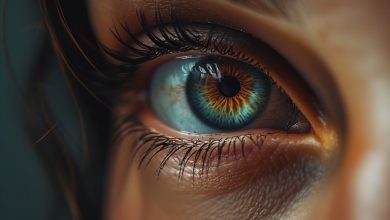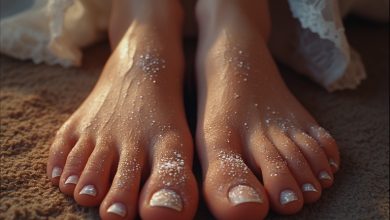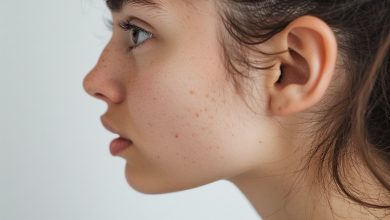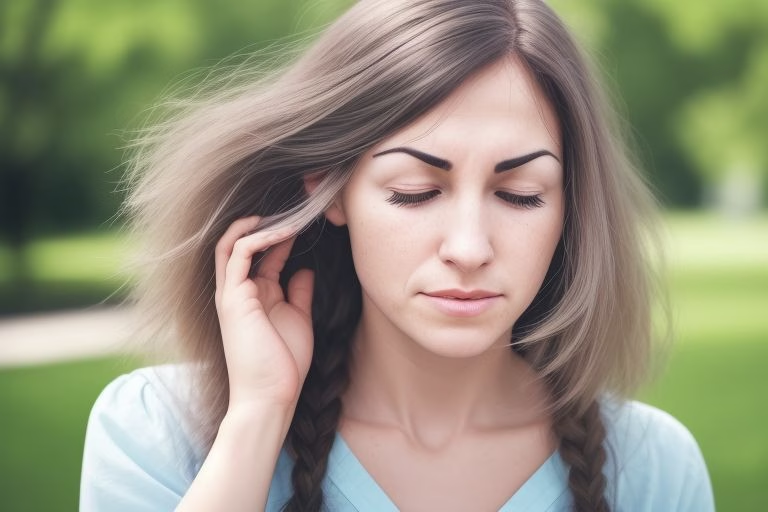
Hair pulling disorder, clinically known as trichotillomania, is a complex and often misunderstood condition that affects millions of individuals worldwide. This comprehensive guide is designed to help you understand the nature of hair pulling disorder, explore its causes, identify its symptoms, and, most importantly, learn 10 transformative steps to overcome this challenging habit. Whether you are personally affected or know someone who is, this article provides engaging insights, practical strategies, and valuable resources to support your journey toward lasting recovery.
What is Hair Pulling Disorder?
Hair pulling disorder is a mental health condition characterized by a compulsive urge to pull out one’s hair, leading to noticeable hair loss and significant emotional distress. The disorder, also known as trichotillomania, is not merely a bad habit—it is a neurological and psychological condition that often coexists with anxiety, depression, and other mental health challenges.
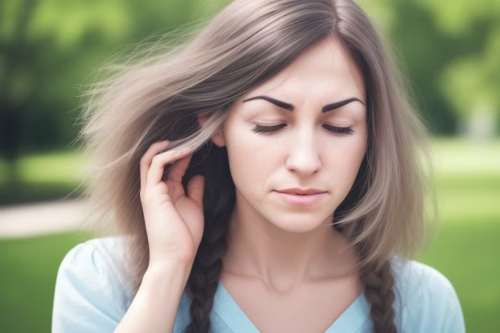
People with hair pulling disorder may feel an overwhelming tension before pulling their hair and a sense of relief afterward. Despite its severity, many individuals suffering from this disorder struggle to seek help due to embarrassment or misunderstanding of the condition.
For additional authoritative information, you can visit the National Institute of Mental Health for a detailed overview of trichotillomania.
The 10 Transformative Steps to Overcome Hair Pulling Disorder
Overcoming hair pulling disorder is a journey that involves understanding your triggers, seeking professional help, and engaging in self-care practices. Here are 10 transformative steps to help guide you through this recovery process:
1. Recognize and Acknowledge the Disorder
The first step in overcoming any challenge is acknowledgment. Recognize that hair pulling disorder is a medical condition rather than a mere habit. Understanding that you are dealing with a legitimate mental health issue is vital for beginning your journey toward recovery.
- Tip: Keep a daily journal to record episodes of hair pulling, noting any triggers, feelings, or patterns.
- Outbound Resource: For more on the importance of self-awareness in mental health, check out Psychology Today.
2. Educate Yourself About Trichotillomania
Knowledge is power. Learn everything you can about trichotillomania from reputable sources. Understanding the underlying causes, common triggers, and treatment options can empower you to take control of your condition.
- Tip: Read books, scientific articles, and trusted online resources. The Mayo Clinic offers comprehensive articles on the disorder.
- Key Insight: Education not only demystifies the condition but also helps reduce feelings of isolation.
3. Seek Professional Guidance
One of the most critical steps in managing hair pulling disorder is to seek professional help. Mental health professionals, including psychologists and psychiatrists, can provide you with tailored strategies to cope with the condition.
- Tip: Look for specialists with experience in obsessive-compulsive and related disorders.
- Outbound Resource: The American Psychological Association can help you locate a qualified professional in your area.
4. Engage in Cognitive Behavioral Therapy (CBT)
Cognitive Behavioral Therapy (CBT) is a proven method for managing compulsive behaviors. CBT helps you identify negative thought patterns and develop healthier coping mechanisms.
- Tip: Techniques such as Habit Reversal Training (HRT) are particularly effective for hair pulling disorder.
- Key Benefit: CBT can significantly reduce the frequency and intensity of hair pulling episodes.
- Outbound Resource: Learn more about CBT and its benefits at Verywell Mind.
5. Incorporate Mindfulness and Relaxation Techniques
Stress and anxiety are common triggers for hair pulling disorder. Mindfulness practices, such as meditation, deep breathing exercises, and progressive muscle relaxation, can help reduce stress and interrupt the cycle of hair pulling.
- Tip: Practice mindfulness daily, even if only for 10-15 minutes.
- Key Benefit: Mindfulness can help you stay present and reduce impulsive behaviors.
- Outbound Resource: Explore guided meditation practices on Headspace.
6. Adopt a Healthy Lifestyle
A balanced lifestyle can contribute significantly to your overall well-being and help manage symptoms of hair pulling disorder. Regular exercise, proper nutrition, and adequate sleep are essential components of a healthy recovery plan.
- Tip: Consider incorporating activities like yoga, jogging, or cycling into your routine.
- Key Benefit: Healthy living supports both physical and mental health, reducing overall stress.
- Outbound Resource: The Centers for Disease Control and Prevention offers practical tips on maintaining an active lifestyle.
7. Explore Alternative Therapies
In addition to traditional therapy, many people benefit from alternative treatments. These may include art therapy, acupuncture, or even the use of weighted blankets to provide comfort and reduce anxiety.
- Tip: Always consult with your healthcare provider before starting any alternative treatment.
- Key Benefit: Alternative therapies can complement your primary treatment and offer additional relief.
- Outbound Resource: Read about alternative therapies on WebMD.
8. Join a Support Group
Connecting with others who share similar experiences can be incredibly healing. Support groups provide a safe space to share your challenges, gain encouragement, and learn from others who have navigated similar struggles.
- Tip: Look for local or online support groups focused on hair pulling disorder and related conditions.
- Key Benefit: Community support can reduce feelings of isolation and offer practical advice.
- Outbound Resource: Websites like Trichotillomania Learning Center offer support and resources for individuals with trichotillomania.
9. Develop a Personal Action Plan
Recovery from hair pulling disorder is a gradual process that requires a well-thought-out action plan. Set realistic goals, track your progress, and celebrate small victories along the way.
- Tip: Write down your recovery goals and revisit them regularly to stay motivated.
- Key Benefit: Action plans provide structure and help maintain focus during challenging times.
- Outbound Resource: The National Alliance on Mental Illness provides tools for creating effective personal action plans.
10. Embrace Patience and Persistence
Recovery is not an overnight process. Embrace patience and persistence, knowing that setbacks may occur but that each step forward is progress.
- Tip: Remind yourself that every day is an opportunity to learn and grow.
- Key Benefit: Patience and persistence are essential for long-term success in overcoming hair pulling disorder.
- Outbound Resource: For motivational stories and further insights on recovery, consider visiting Mental Health America.
Understanding the Underlying Causes of Hair Pulling Disorder
While the exact cause of hair pulling disorder remains under study, several factors are known to contribute to the development of the condition. Research suggests that a combination of genetic, neurological, and environmental factors may be at play.
- Genetics: There is evidence that trichotillomania may run in families, suggesting a hereditary component.
- Brain Chemistry: Imbalances in neurotransmitters, the chemicals responsible for communication in the brain, can lead to compulsive behaviors.
- Emotional Stress: High levels of stress and anxiety are common triggers, making hair pulling disorder a way for some individuals to cope with overwhelming emotions.
- Environmental Factors: Childhood trauma, significant life changes, or ongoing stress in one’s environment can all contribute to the onset of the disorder.
For a deeper dive into the science behind hair pulling disorder, the National Institutes of Health provides access to cutting-edge research and clinical studies.
Recognizing the Symptoms and Early Warning Signs
Understanding the symptoms of hair pulling disorder is crucial for early intervention. The following are common signs that someone may be struggling with this condition:
- Noticeable hair loss: Frequent pulling can result in bald patches on the scalp, eyebrows, or other areas of the body.
- Repeated attempts to stop: Individuals may try to resist the urge but find themselves succumbing to the compulsion repeatedly.
- Emotional distress: Feelings of shame, guilt, or anxiety are common among those affected by hair pulling disorder.
- Ritualistic behavior: Some individuals develop specific rituals around hair pulling, such as only pulling hair in certain settings or at specific times of the day.
- Concealment: Many people go to great lengths to hide their hair loss, which can exacerbate feelings of isolation and depression.
Recognizing these symptoms early on can facilitate prompt intervention and more effective treatment. The Mayo Clinic offers a detailed description of the symptoms associated with trichotillomania.
The Role of Cognitive Behavioral Therapy in Recovery
Cognitive Behavioral Therapy (CBT) is one of the most effective treatments for hair pulling disorder. CBT works by helping individuals identify and change negative thought patterns that lead to compulsive behavior. Here’s how CBT can help:
- Identifying triggers: Through therapy, you can pinpoint the situations or emotions that trigger your hair pulling episodes.
- Developing coping strategies: Therapists work with you to develop practical methods to manage and redirect your urges.
- Habit Reversal Training: This component of CBT teaches alternative behaviors that replace the urge to pull hair.
- Long-term relapse prevention: CBT provides tools and strategies to maintain progress even after the initial treatment phase.
For more detailed insights on CBT, refer to the guide on Verywell Mind.
Self-Care and Lifestyle Adjustments for Lasting Change
Successful recovery from hair pulling disorder goes beyond therapy and medical treatment. It also involves making key lifestyle adjustments and practicing self-care. Here are some practical tips:
- Establish a Routine: A structured daily routine can reduce anxiety and provide fewer opportunities for hair pulling.
- Engage in Physical Activity: Exercise helps manage stress, improves mood, and distracts from compulsive behaviors.
- Pursue Hobbies: Engaging in hobbies like painting, writing, or playing a musical instrument can provide creative outlets for your emotions.
- Healthy Nutrition: A balanced diet can positively impact overall mental health and energy levels.
- Sleep Well: Adequate sleep is essential for mental and physical recovery, reducing stress levels and improving emotional regulation.
By integrating these practices into your daily life, you create a supportive environment for recovery. Learn more about self-care strategies from Mindful.
Exploring Alternative Therapies and Complementary Treatments
While traditional therapies like CBT and medication are central to treatment, many individuals find relief through alternative therapies. These methods can serve as complementary approaches to enhance overall well-being.
- Art Therapy: Expressing yourself through creative outlets can help manage emotions and reduce the impulse to pull hair.
- Acupuncture: Some people report a decrease in anxiety and stress through acupuncture treatments.
- Mindfulness-Based Stress Reduction (MBSR): This program incorporates mindfulness meditation and yoga to combat stress and improve mental clarity.
- Nutritional Supplements: While not a replacement for professional treatment, certain vitamins and minerals may support brain health and reduce anxiety.
Always consult with a healthcare professional before starting any new treatment plan. For more on alternative therapies, check out resources on WebMD.
The Importance of Support Groups and Peer Connections
Living with hair pulling disorder can be incredibly isolating. Connecting with others who understand your experiences is a vital part of the recovery process. Support groups provide a safe space to share, listen, and learn from others.
- Online Communities: Social media platforms and dedicated forums can connect you with a global network of individuals who have similar experiences.
- Local Meetups: Many cities have local support groups led by mental health professionals or individuals in recovery.
- Therapeutic Workshops: These sessions, often organized by mental health clinics, can provide both professional guidance and peer support.
Engaging with a community not only provides emotional support but also practical advice on coping strategies. For more information on finding a support group, visit Trichotillomania Learning Center.
Medication and Medical Treatments for Hair Pulling Disorder
In some cases, medication may be prescribed to help manage hair pulling disorder. While there is no medication specifically designed for trichotillomania, doctors may use medications approved for related conditions such as anxiety or obsessive-compulsive disorder (OCD).
- Selective Serotonin Reuptake Inhibitors (SSRIs): These are commonly prescribed to help balance brain chemicals and reduce compulsive behavior.
- N-Acetylcysteine (NAC): Some studies have shown promise in using NAC as a supplement to reduce the urge to pull hair.
- Other Medications: Depending on individual symptoms, other medications may be considered to address co-occurring conditions like depression or anxiety.
Medication is typically used in combination with therapy to provide a more holistic treatment approach. For further reading on medication options, the Mayo Clinic offers comprehensive insights.
The Emotional Impact of Hair Pulling Disorder
The psychological toll of hair pulling disorder can be profound. Many individuals experience low self-esteem, anxiety, and depression as a result of their condition. Understanding the emotional aspects is crucial in managing the disorder.
- Self-Esteem Issues: Hair loss can lead to embarrassment and social withdrawal.
- Anxiety and Depression: The constant battle with the urge to pull hair often results in significant emotional distress.
- Guilt and Shame: Many feel guilty about their inability to control the behavior, which can exacerbate feelings of isolation.
Addressing these emotional challenges is an essential component of recovery. Therapeutic interventions that focus on emotional well-being can make a significant difference. For more detailed support on mental health challenges, Mental Health America provides extensive resources and advice.
Developing a Personalized Recovery Plan
Every journey toward recovery from hair pulling disorder is unique. A personalized plan that considers your specific triggers, emotional needs, and lifestyle is key to long-term success.
- Set Clear Goals: Whether it’s reducing the frequency of hair pulling or eliminating it altogether, set measurable and realistic goals.
- Monitor Progress: Keep a detailed log of your progress. Track both successes and setbacks to better understand your patterns.
- Adjust Strategies: Your recovery plan should be flexible. As you progress, adjust your strategies to better suit your evolving needs.
- Celebrate Achievements: No victory is too small. Celebrate every milestone to maintain motivation and self-worth.
For guidance on creating a personalized recovery plan, consider using the tools available at National Alliance on Mental Illness.
Overcoming Setbacks and Maintaining Motivation
Recovery from hair pulling disorder is rarely linear. Setbacks are a natural part of the journey. The key is to learn from these challenges and remain motivated.
- Reframe Setbacks: Instead of viewing setbacks as failures, see them as opportunities to understand triggers better.
- Develop Coping Mechanisms: Techniques such as mindfulness, journaling, or engaging in a hobby can help you navigate difficult moments.
- Seek Support: When setbacks occur, reach out to your therapist or support group immediately.
- Stay Informed: Keep up with the latest research and new therapeutic techniques to find strategies that work best for you.
The American Psychological Association provides additional insights into handling setbacks in mental health recovery.
Real-Life Stories and Success Narratives
Hearing real-life stories from others who have successfully managed hair pulling disorder can be incredibly inspiring. These narratives offer hope and practical advice for those on their own journey toward recovery.
- Personal Blogs and Forums: Many individuals share their experiences online, detailing both the struggles and victories in their journey. These stories not only provide comfort but also actionable tips.
- Interviews with Experts: Mental health professionals often share case studies and success stories that highlight effective treatment strategies.
- Community Events: Virtual or in-person meetups provide opportunities for individuals to share their journeys and learn from one another.
For inspiring success stories and community experiences, visit Trichotillomania Learning Center and Mental Health America.
The Future of Hair Pulling Disorder Treatment
Advancements in neuroscience and psychology are paving the way for innovative treatments for hair pulling disorder. Researchers are continually exploring new avenues to better understand and treat this condition.
- Genetic Research: Ongoing studies are investigating the genetic factors that contribute to trichotillomania, potentially leading to more targeted therapies in the future.
- Neuroimaging Studies: Brain imaging techniques are being used to identify patterns and neural circuits associated with compulsive behaviors.
- Innovative Therapies: New forms of therapy, including virtual reality exposure therapy and digital CBT apps, are emerging as promising tools for managing the disorder.
Staying informed about these advancements can provide hope and additional strategies for those affected. For up-to-date research, the National Institutes of Health offers a wealth of information.
Building a Resilient Mindset for Long-Term Recovery
Long-term recovery from hair pulling disorder involves cultivating a resilient mindset. This means not only managing the symptoms but also developing a strong inner foundation that supports overall mental health.
- Positive Affirmations: Practice daily affirmations to build self-esteem and reinforce positive behaviors.
- Mindset Shifts: Focus on what you can control rather than dwelling on setbacks. Replace negative thoughts with constructive alternatives.
- Gratitude Practices: Cultivating gratitude can significantly improve overall well-being and shift your perspective from negativity to positivity.
- Continuous Learning: Embrace a mindset of lifelong learning about mental health. The more you understand, the better equipped you are to manage challenges.
For tips on building resilience, consider exploring resources from Mindful.
Involving Family and Friends in Your Recovery
A strong support network is invaluable when dealing with hair pulling disorder. Educating family and friends about your condition can help them provide the right kind of support.
- Open Communication: Share your experiences and struggles with trusted loved ones so they understand your challenges.
- Family Therapy: In some cases, involving family in therapy sessions can provide mutual support and enhance understanding.
- Supportive Environment: Encourage your family to help create a stress-free environment that minimizes triggers and reinforces positive behaviors.
- Educational Workshops: Family members can benefit from attending workshops or reading about trichotillomania to better understand the condition.
The National Alliance on Mental Illness offers resources specifically designed for family members and friends of those dealing with mental health challenges.
Embracing Technology in the Recovery Process
Modern technology has introduced innovative tools that can help in managing hair pulling disorder. From mobile apps to online therapy sessions, technology plays a pivotal role in providing accessible support.
- Mobile Apps: There are apps designed to help track your mood, provide CBT exercises, and remind you to engage in healthy practices.
- Online Therapy: Virtual therapy sessions offer flexible and accessible mental health care, especially for those who may not have local support.
- Wearable Devices: Some devices can help monitor stress levels and remind you to practice relaxation techniques when needed.
- Virtual Communities: Online forums and social media groups offer a platform for continuous support and shared experiences.
For more on technology-assisted mental health tools, visit TechCrunch Health.
Long-Term Strategies for Preventing Relapse
Once you’ve made significant progress in managing hair pulling disorder, it’s essential to implement long-term strategies to prevent relapse.
- Regular Therapy Check-ins: Even after you start feeling better, occasional sessions with your therapist can help you stay on track.
- Mindfulness Practice: Continue with mindfulness and stress-reduction exercises daily.
- Community Engagement: Stay active in support groups and online communities.
- Ongoing Education: Keep yourself informed about new treatments and strategies that might benefit your recovery journey.
- Self-Monitoring: Maintain a log of your thoughts, feelings, and any urges to pull hair. Early detection of patterns can help you intervene before a full relapse occurs.
For relapse prevention strategies, the American Psychological Association provides useful guidelines.
Combating Stigma and Raising Awareness
One of the biggest challenges faced by those with hair pulling disorder is the stigma associated with mental health conditions. Raising awareness and fighting stigma is critical for fostering a more supportive society.
- Share Your Story: If you feel comfortable, sharing your personal journey can help others feel less alone.
- Advocate for Mental Health: Engage with mental health advocacy groups to help spread awareness and promote understanding.
- Educate Others: Use social media platforms, blogs, and community events to educate others about trichotillomania and its impact.
- Promote Empathy: Encourage empathy and compassion in discussions about mental health, emphasizing that hair pulling disorder is a genuine and treatable condition.
For more on advocacy and mental health awareness, visit Mental Health America.
Conclusion: Embracing a Journey of Hope and Healing
Overcoming hair pulling disorder is a challenging but achievable goal. By recognizing the problem, seeking professional help, and implementing a combination of therapeutic strategies, self-care practices, and community support, you can take decisive steps toward lasting recovery. Remember, every individual’s journey is unique, and it’s important to be patient, persistent, and kind to yourself along the way.
Each of the 10 transformative steps outlined in this guide is designed to empower you with the knowledge, strategies, and resources needed to conquer this devastating habit. The road to recovery may have its ups and downs, but with a resilient mindset and a comprehensive support system, a healthier and happier future is within reach.
For further reading on overcoming mental health challenges, check out additional resources from Psychology Today and Mayo Clinic.
Embrace this journey with determination and hope. Remember, you are not alone in this battle, and every step you take brings you closer to reclaiming your life from hair pulling disorder. The path may be challenging, but every victory, no matter how small, is a testament to your strength and commitment to change.
By staying informed, seeking help, and practicing self-compassion, you are building a foundation for a future free from the constraints of this disorder. Your journey to recovery is a continuous process of growth, learning, and transformation—and with each day, you are one step closer to the freedom and fulfillment you deserve.
May this guide serve as a beacon of hope, inspiration, and practical assistance in your journey toward overcoming hair pulling disorder. Remember, every transformative step you take is a powerful affirmation of your ability to conquer adversity and emerge stronger on the other side.
This comprehensive guide is intended to be a resource for anyone affected by hair pulling disorder. By integrating professional advice, personal strategies, and community support, you can overcome the challenges of this condition. Whether you are just beginning your journey or looking for additional insights to maintain progress, the strategies outlined above provide a robust framework for achieving lasting recovery.
For more articles on mental health and recovery strategies, feel free to explore reputable resources like National Institute of Mental Health and American Psychological Association. Embrace your journey, stay motivated, and remember that help is always available—your path to recovery starts with a single, transformative step.
By following these 10 transformative steps and integrating the suggested lifestyle adjustments, therapy options, and support systems, you are well-equipped to take control of your hair pulling disorder and build a brighter, healthier future. The road to recovery may be long, but every stride forward is a victory worth celebrating. Embrace the challenge with courage, and let each day be a new opportunity for growth and healing.
Your recovery story is powerful—and sharing it may inspire others to take their first steps toward overcoming trichotillomania. Stay strong, keep learning, and know that with patience and perseverance, you can conquer this devastating habit once and for all.
This article is provided for informational purposes only and is not a substitute for professional medical advice. Always consult with a healthcare professional for diagnosis and treatment options related to hair pulling disorder.

